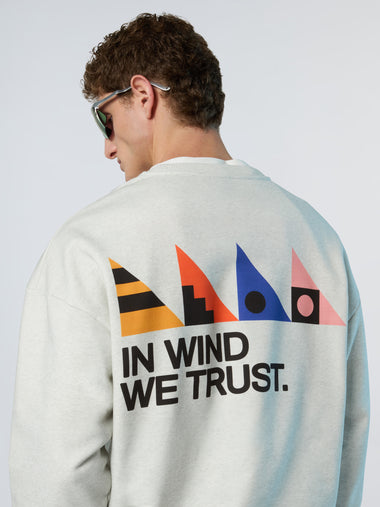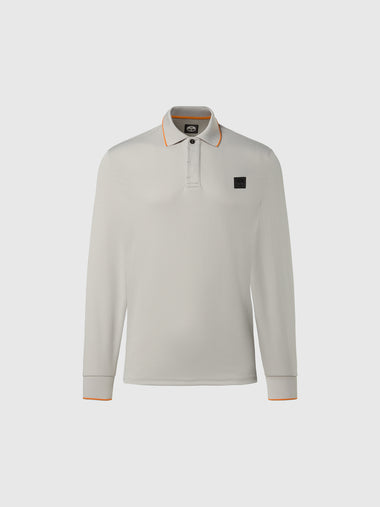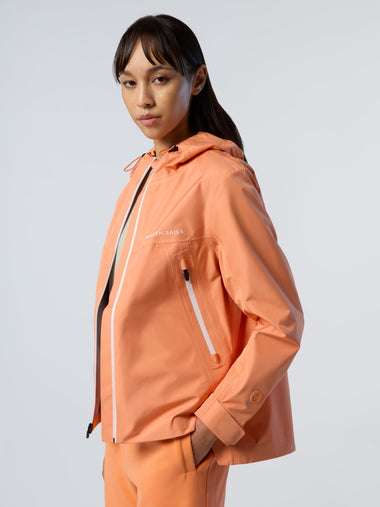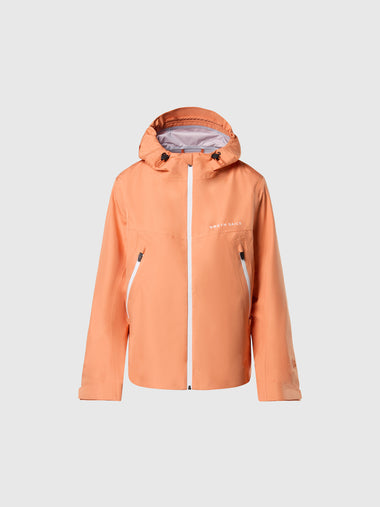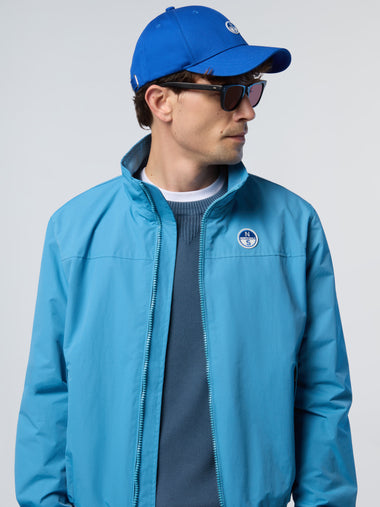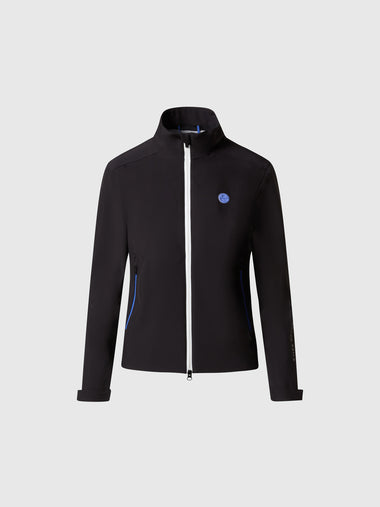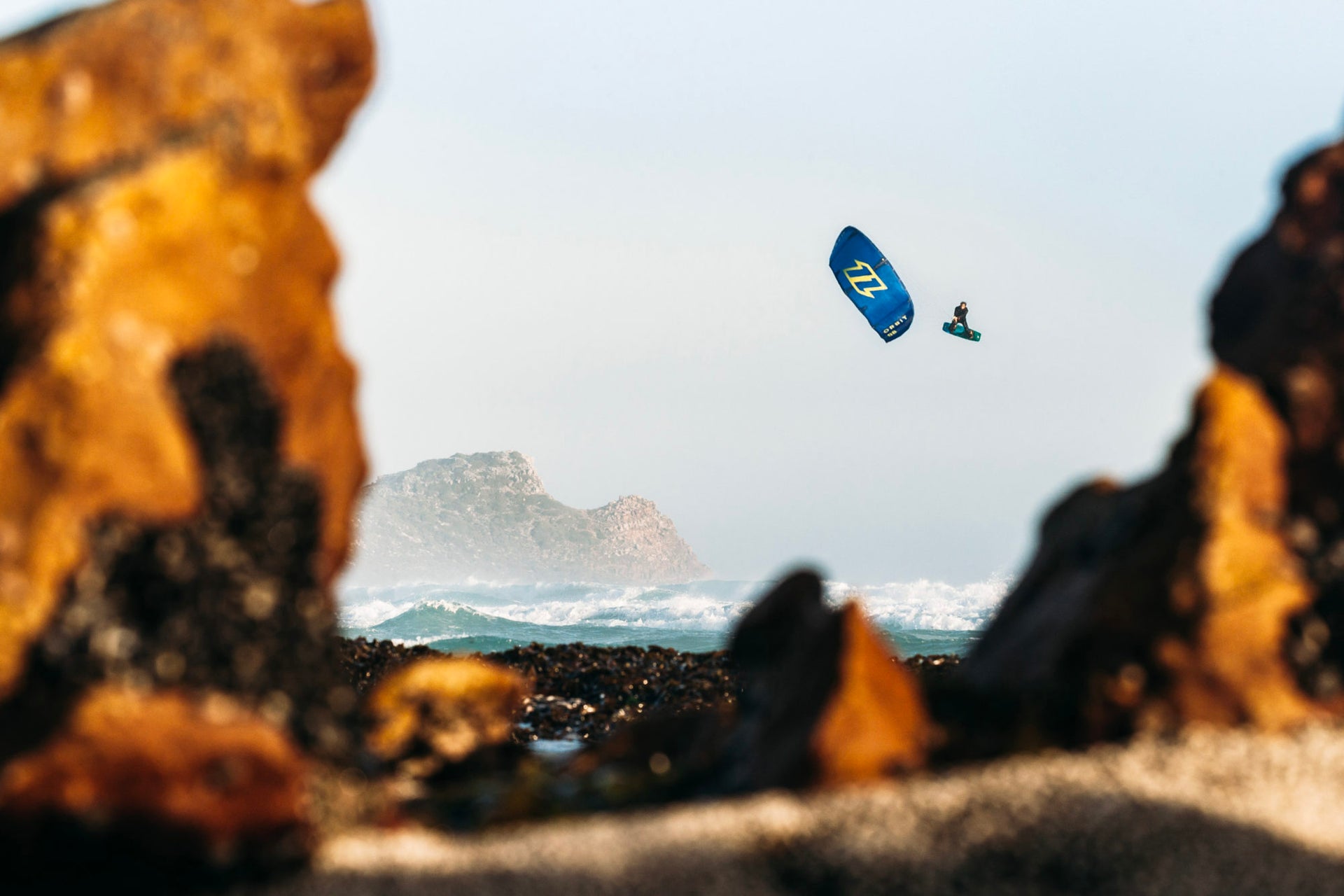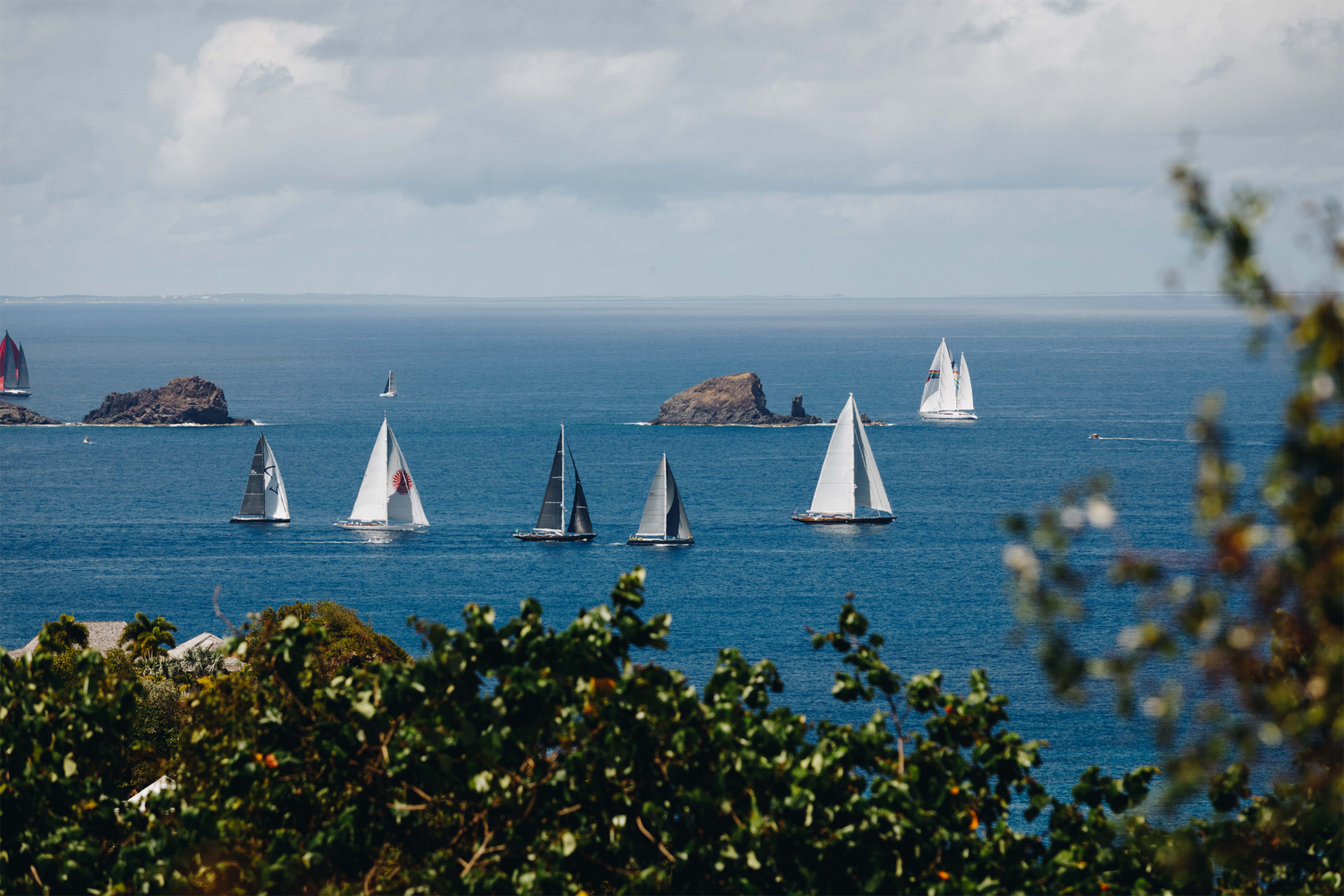CONNECTING KITING AND SAILING
CONNECTING KITING AND SAILING
Steve Calder Brings Years of Sail Design Experience and a Passion for Kiting to a New Project

It wasn’t flashy imagery or action sports videos that got Steve Calder, North Sails designer, interested in kiting. His love for the sport began when his son decided he wasn’t interested in sailing optis while the family was in Valencia, Spain working on America’s Cup. A couple of months later back in Delray Beach, Florida, Kai Calder, Steve’s son, called his dad down to the beach where he and some friends had a trainer kite set up.
That Christmas, Kai was fully outfitted with all the gear needed to start his kiting career. He said, “come on Dad. It’s just water, it’s wind. It’s all the stuff you do. But it’s something that I like doing and it’s kind of an expressive sport.” As a result, Calder was hooked on the sport too. Kai is now a professional foil racer on the Pro World Tour, taking after his dad developing and innovating new gear for the sport he loves.
Steve Calder is one of the most lauded designers at North Sails, starting as a great sailor, winning a Bronze medal for Canada in the Soling class at the 84’ Olympics, and upwards from there. He has designed for programs like BMW Oracle Racing, Artemis, Ericsson, Puma Ocean Racing, and Rambler; and was instrumental in the development and the continued development of the Helix Structured Luff system. Calder has seen North Sails through many iterations of America’s Cup sails, as the rule has evolved. Calder is the pinnacle of sail design at North Sails, designing, engineering, and putting forth revolutionary products applied to the boats that are the highest caliber in the sport.

He’s one of the lead designers that the North Sails Design team turns to for guidance in solving design challenges. The company looks to Calder to help guide them in aerodynamic and structural solutions for Grand Prix products and Grand Prix customers.
“The goal of a sailmaker is to provide the best aerodynamics solution for a set of objectives,” says JB Braun, Director of Design and Engineering at North Sails. “Steve’s love of creating faster sail designs has driven him to the top of the sport of sailing. He gets intimately involved with the structure of the sails. He’s exploring new ways of working with materials, like 3Di to refine sail structure. You give him a challenge and he’s right in it, making sure that the design satisfies the customer’s goals.”
Calder uses the North Design Suite for designing top end, leading-edge solutions for race boats. The sophisticated, proprietary software, allows North designers to push the boundaries of sail design and be confident in the results. Calder is combining the North Sails foundation of data-driven design with his own intuition, as a kiteboarder, and applying it to the kites to help innovate and create the next generation.

Taking on a kite design project was an exciting and very different challenge for the designer, what he brings to the table here is his ability to innovate and apply his aero expertise that can be prototyped and applied to kite designs.
Calder began working with sailmaker Dave Little and the North Kiteboarding chief designer, Pat Goodman, who is an industry authority on kite design and innovation. Goodman’s ability to understand and translate rider requirements into high-performance kite designs puts him among the world’s most awarded, respected, and successful kite designers.
The team, combining their respective skills and knowledge, have found it fascinating to brainstorm and push the envelope with kite design and its applicability across a wider audience. Starting from scratch and having the opportunity to work with Pat Goodman is a dream in some ways for Calder. Goodman is known for being the guru of kite design, in the same way that Calder is with sails, he is able to fly a kite and sense what can be streamlined to make the product better.
“It just kind of kept moving on from there.” Says Calder, “North Kiteboarding hired Dave to do further explore the development for the kites. And we became a team, I wanted to be involved. We built several prototypes and put them to the test. Some of the impetus for the 2021 launch of the new North kites was a result of our collective work. Dave and I gave some input to that process.”
Pat Goodman says, “it’s so nice to have that opportunity to bring together the North Sails design and material development expertise into the mix. A modern day dream team working towards the goal of crafting a perfect kite.”

“The core aerodynamic principles are the same,” says Calder, “it’s all, lift and drag. Having an idea and appreciation for how a kite or wind wing behaves and what the requirements are to build a good wing are the first principles of aerodynamics. In a way, it’s similar to designing sails but in other ways, it’s brand new. You can make a kite that’s too stiff, right. And oftentimes with sails, you can’t make a sail stiff enough. With kiting there are all sorts of design acumen that you would have that doesn’t relate really to sails at all because the kites behave in an entirely different way.”
Calder says that for most kiters, choosing a kite is all about the feel, whether they understand the physics or not, a concept that translates easily for sailors who are interested in getting into the sport. If you can find the groove in a sailboat, you can likely tell the difference between a well-designed kite and a lemon.
There is an opportunity to set a higher design benchmark in the kite industry and Pat Goodman is at the peak. “Goodman has basically spent a lifetime designing kites. As much as I’ve spent my life devoted to sailboats and performance sailing,” says Calder, “I can get on any boat and I can look up and tell what will improve the performance of that boat, whether it’s the boat, the sails, or the rig. Goodman can do that with a kite.”
Most sailors will find that kiting augments their sailing experience, as the basic principles are very similar. Pulling down on the bar is similar to pulling in the mainsheet. Making adjustments to the center lines on a kite is similar to tuning the check stays on a sailboat.

In Calder’s words, “that’s changing the entry angle of the kite. As you pull down, you power the kite, you pull the entry angle down, so you basically release the trailing edge. By doing so, the more you open it up, you’ll notice that the kite’s going to luff, and you’re de-powering the kite. Like when you ease your check stay on a sailboat, the sail gets flatter, and therefore you can sheet it harder.”
In a way, when kiting, your body takes the place of the boat. If you are sailing upwind, and the boat gets a puff, everyone feels it and hikes a little harder. The helmsman makes an adjustment. Kiting makes you more attuned to the wind and allows you to take immediate advantage of that puff, instantaneously, you can edge up and gain speed. There is nothing between you and the power of the kite.
“The feel is amazing.” Says Calder, “if a teammate is sitting on the rail sailing with us and leans over and asks, ‘Hey, what about kiting? You’re really into that. What do you think about it?’ I tell them, the first time I jumped on a laser as a kid, all I wanted to do was pull the centerboard up and just go planing around because it was really fun. The boat was fast, the water was flying everywhere. Anytime the conditions are conducive to kite, it’s the starting point for kiting. And it only gets better from there…”




